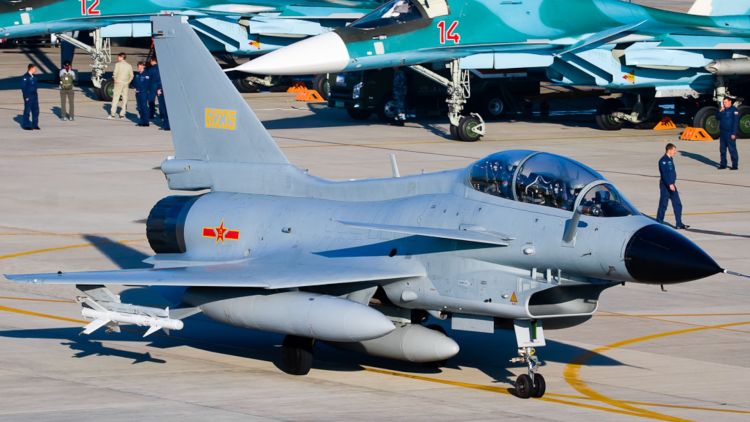Egypt has been making waves recently with a big decision that could change the way it approaches defense for years to come.
Instead of sticking with the tried-and-true US-made F-16s, Egypt has opted to purchase Chinese J-10C “Vigorous Dragon” fighter jets.
While that might sound like just another military deal, it’s part of a much bigger strategy: Egypt is working hard to diversify its military suppliers and reduce its dependence on Western powers, particularly the US.
Let’s examine how this maneuver signifies Egypt’s comprehensive overhaul of its defense and geopolitical strategy, which goes beyond fighter jets.
From US F-16s to Chinese J-10Cs: Why the Switch?
Egypt’s decision to replace its aging fleet of F-16s with Chinese J-10Cs has raised some eyebrows.
The F-16s have been around since the mid-to-late-1970s, and while they were cutting-edge back then, they’ve been heavily restricted in recent years.
US concerns about Egypt’s human rights record and regional conflicts have meant that Cairo’s F-16s are stuck with outdated avionics and weapons, making them less effective in modern combat situations.
For example, they don’t have beyond-visual-range air-to-surface missiles, which are crucial in today’s high-tech air combat.
Enter China’s J-10C, a 4.5-generation fighter jet equipped with advanced avionics, high maneuverability, and state-of-the-art missiles, offers Egypt a modern alternative.
Developed by the Chengdu Aircraft Corporation in the early 2000s for China’s People’s Liberation Army Air Force (PLAAF), Army Naval Air Force (PLANAF), and the Pakistan Air Force (PAF), the J-10 “Vigorous Dragon” fighter jet is a single-engine that uses a delta wing and canard design.
Not only that, but the J-10C comes at a comparable cost to the US’s upgraded F-16V, making it a no-brainer for Egypt, especially when considering its capabilities.
Here’s a quick technical specification overview:
Length: 55 feet 5 inches (16.9 meters)
Wingspan: 32 ft 2 in (9.8 m)
Height: 18 ft 8 in (5.7 m)
Gross weight: 30,865 lbs (14,000 kg)
Powerplant: One WS-10B afterburning turbofan engines
Maximum speed: Mach 1.8
Range: 1,850 km (1,150 miles)
Service ceiling: 59,000 ft (18,000 m)
A J-10B carrying PL-8 and PL-12 air-to-air missiles landing, 2018. (Wikimedia Commons)
A Push for Military Autonomy
But this move is about more than just comparing fighter jets. Egypt’s decision to buy Chinese aircraft marks a larger shift toward military autonomy.
In recent years, Cairo has been diversifying its suppliers to avoid relying too heavily on any one country, especially when that country is imposing political strings.
The US, for example, has made its military aid to Egypt conditional on certain political factors, which hasn’t sat well with Egyptian leaders who want more control over their defense decisions.
In addition to the J-10Cs, Egypt has also been buying military equipment from other countries, including Russia’s MiG-29M fighter jets and France’s Dassault Rafale.
This strategy allows Egypt to maintain a broader range of relationships and ensures that no single supplier has too much leverage.
It’s a smart move that gives Egypt more flexibility in managing its military and foreign policy.
What This Means for the US and the Region
This shift in Egypt’s military procurement strategy also has big implications for the US.
For decades, Egypt has been a key US ally in the Middle East, receiving billions in military aid.
But by turning to China, Russia, and France, Egypt is signaling that it’s no longer willing to rely so heavily on Washington for its defense needs.
This change in defense suppliers could lead to a reduction in US influence in the region, particularly if other countries follow Egypt’s lead in seeking out non-Western suppliers for military equipment.
At the same time, Egypt is aligning itself more closely with other global powers like China.
By purchasing the J-10Cs and joining the BRICS economic bloc (which includes Brazil, Russia, India, China, and South Africa), Egypt is clearly broadening its horizons.
Other member states of the BRICS include Egypt, Ethiopia, Iran, and the United Arab Emirates.
These relationships give Cairo access to new economic and military opportunities while reducing its dependence on Western countries.
China’s Growing Presence in North Africa and the Middle East
For China, Egypt’s decision is, of course, a big win.
China has been steadily expanding its military and economic influence in the Middle East and North Africa, and Egypt is the latest country to embrace that relationship.
The J-10C sale shows that China is not only a major player in global economics but also in military exports. This move opens the door for more security cooperation between the two countries, and it may encourage other nations in the region to consider Chinese alternatives as well.
China’s growing influence in this part of the world makes sense when you look at the numbers.
The Middle East is China’s fastest-growing trade partner, and the region supplies half of China’s imported oil.
By securing military partnerships with countries like Egypt, China is strengthening its foothold in an area that Western powers have traditionally dominated.
Regional Security and New Alliances
Egypt’s decision to buy Chinese fighter jets also shakes up the regional security landscape.
While Egypt is maintaining its relationships with the US and other Western nations, this move signals a new chapter in its defense strategy.
By diversifying its military suppliers, Egypt is sending a message that it wants to have more control over its defense policy and isn’t afraid to look beyond its traditional allies to achieve that.
This could lead to a shift in regional alliances, as other countries watch how Egypt balances its relationships with both Western and non-Western powers.
The J-10Cs may be just the beginning of a larger realignment in the Middle East, where countries are increasingly looking for ways to reduce their reliance on Western military and economic systems.
Final Thoughts: A New Chapter in Egypt’s Military Strategy
Egypt’s decision to purchase Chinese J-10C fighter jets is more than just a simple military transaction. It’s a key part of a broader strategy to diversify military partnerships and gain greater independence in defense matters.
By moving away from US reliance and embracing alternatives from China, Russia, and France, Egypt is positioning itself as a more autonomous player on the world stage.
This shift reflects larger trends in the Middle East and North Africa, where countries are seeking to reduce their dependence on Western powers and build relationships with new global players.
For Egypt, this means more control over its defense, access to advanced military technology, and the ability to navigate a complex geopolitical landscape with greater flexibility.
In the end, Egypt’s strategic realignment shows that it’s no longer content to be tied down by traditional alliances. It’s looking to the future, building new partnerships, and ensuring that its military remains strong and independent in an increasingly multipolar world.
—
Disclaimer: SOFREP utilizes AI for image generation and article research. Occasionally, it’s like handing a chimpanzee the keys to your liquor cabinet. It’s not always perfect and if a mistake is made, we own up to it full stop. In a world where information comes at us in tidal waves, it is an important tool that helps us sift through the brass for live rounds.



